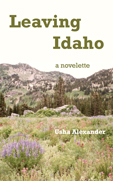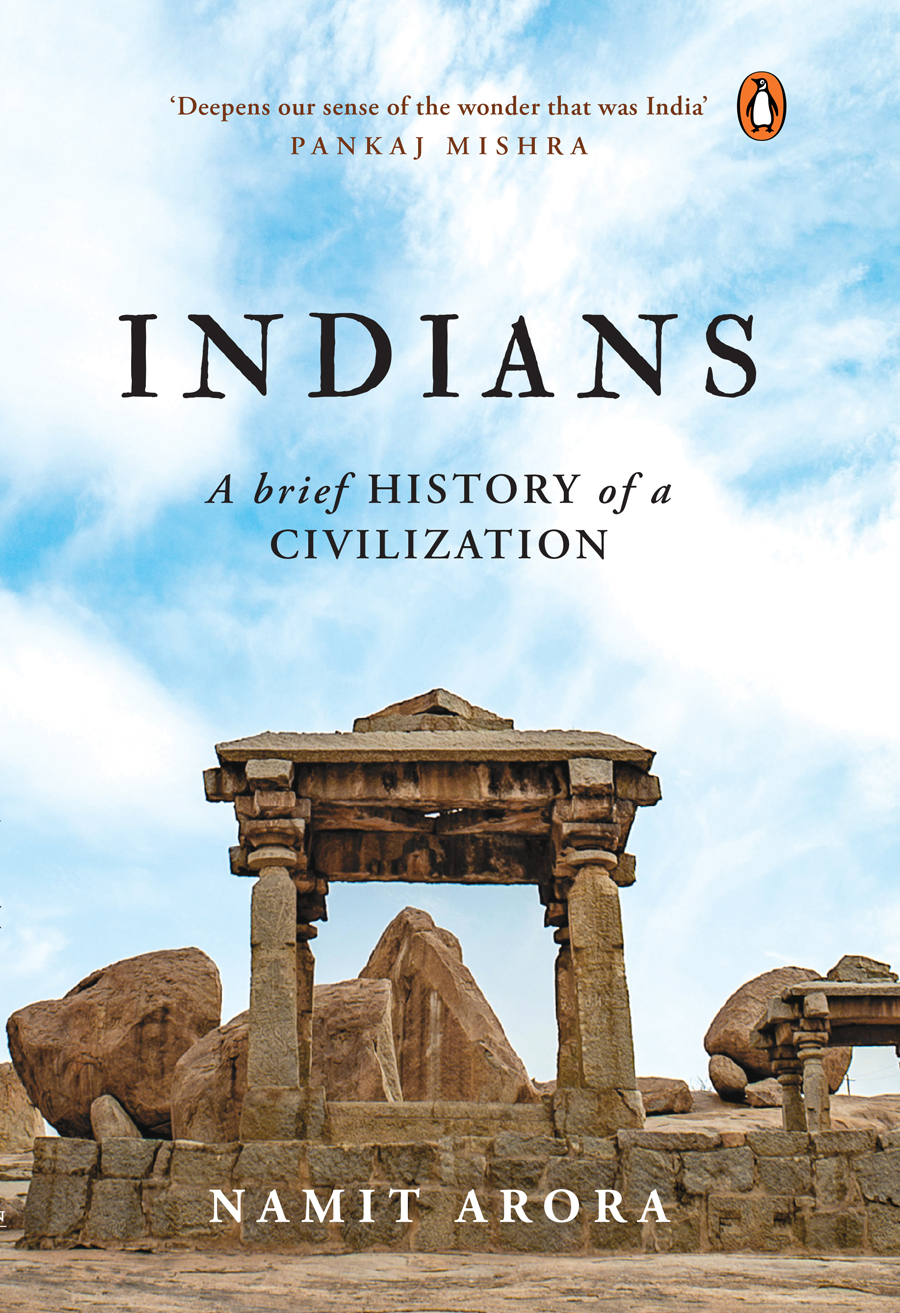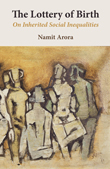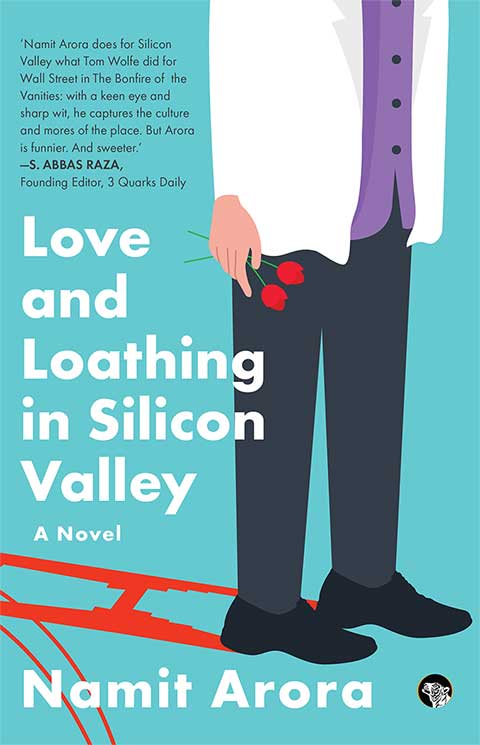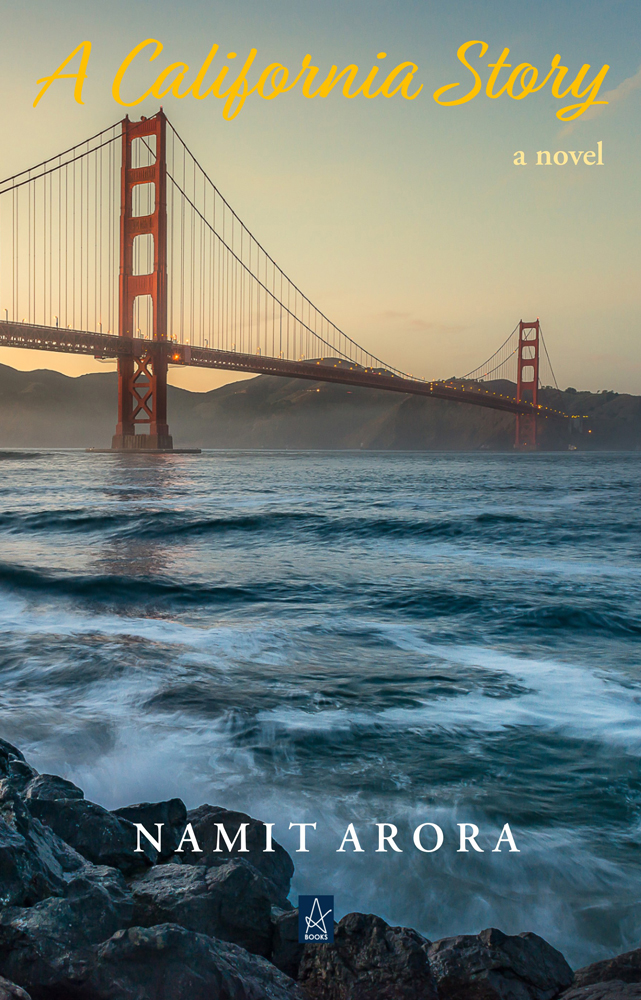| Index of articles from the Blog |
| Animals |
| Anthropology & Archaeology |
| Art & Cinema |
| Biography |
| Books & Authors |
| Culture |
| Economics |
| Environment |
| Fiction & Poetry |
| History |
| Humor |
| Justice |
| Philosophy |
| Photography |
| Politics |
| Religion |
| Science |
| Travel |
Books by
Books by
|
Stories About the End of the World
By Usha Alexander | Jun 2019 | Comments
(This essay first appeared in Pangyrus literary magazine, June 2019.)
It’s possible that seeing the extinction clock struck me with such force because I’d already noticed living things disappearing around me at home. As a child growing up in the arid hills of southern Idaho, I’d once discovered a colony of tiny creatures living on the side of our home. Each one was about the size of a thumbnail on my six-year-old hands, bearing a curled shell, like a snail. But these shells were soft, and the animals within seemed dry and sticky, rather than slimy. Their rate of movement was imperceptible to me, but every summer a great throng of them clung to the sunbaked red bricks of our southwestern exposure. A couple of summers after I’d first noticed them, I realized that there were fewer of them. Their numbers shrank every year, until, by the time I was eleven, they were simply gone. I never found out what kind of animal they were, and I’ve never seen or heard reference to animals like them anywhere again. I’d already noticed, too, that the shimmering explosion of grasshoppers, which once erupted from our every footfall as we walked through the weedy grasses, where our lawn gave way to tumbleweed, sagebrush, and juniper, had gone still. The long, fat earthworms that exhumed themselves during every rainstorm, to twist awhile and then dry up on the pavements, no longer left their brown stains along the sidewalks. Stinkbug beetles and roly-poly potato bugs, once our playthings on idle summer afternoons, had become harder to find. The little scorpions that occasionally took shelter in our house, hiding in our shoes, stopped coming inside (though I habitually tamped out my shoes before wearing them for years after). No longer did we have to scrub our car’s windshield and grille clean of the bugsplats that coated them after every night drive along the highway, for the swarms of flying insects that once hovered ubiquitously over the sundowned desertscapes had thinned and finally vanished. It seemed to me as though all the bugs, everywhere (except the pesky mosquitoes!), were disappearing. As in the museum, no one around me seemed concerned about this. My peers and elders carried on as though the world remained limitless and unchanging. In the fifth grade, I didn’t know much about bugs and I had no one to ask. I wasn’t aware at the time how much of the living world depends upon their daily toil, their unremarked—and still largely mysterious—interactions that link the microscopic and macroscopic worlds. Yet somehow I intuited that their demise was a dire warning, like canaries in a coalmine. But it was worse than that: it was not a warning but a collapse already underway. Today we know that perhaps eighty percent of the world’s insect biomass has vanished in just the past three decades. The ticking signboard I saw at the museum, and the research results of scientists I’d learn about decades later, confirmed to me that the silent decline of the natural world was not merely my imagination.
Microbiota, fungi, plants, and other animals, including those of which we remain unaware, constitute an interdependent web of life, complex beyond our ken. This rich diversity of species is essential for maintaining this world as we know it. And to sustain resilient, adaptable populations of each kind of living thing, each must remain in great enough number and genetic variety to represent a diversity within species, as well. As billionsof local populations of insects and other living things continue to shrink, this diversity within species is the first thing to be lost. Diminished populations falter and crash, leaving them vulnerable to extirpation. Severe population declines or the elimination of any species from its habitat destabilizes its resident ecosystem, often in unpredictable and far-reaching ways. This can cause further population failures, in a downward spiral of extinctions. If this attrition of biodiversity continues, severing so many strands in our web of life that it no longer holds, it will cascade into a mass extinction event, ultimately disrupting the balance of the global ecosystem and fundamentally altering the state of the planet. In such a world, we may find our air, water, and soil absolutely depleted or even rendered toxic to humans, while the natural processes that once replenished and renewed them have been shut down. Plants may struggle to grow in dirt that’s barren of burrowing animals, worms, insects, spiders, and microbes. They might shrivel under torrents of acid rain created by derangements to different biogeochemical cycles. If oxygen is depleted from the oceans, drowning marine life, animals like us may be laboring for breath under an oxygen-diminished sky. It’s difficult to know just what would play out if our biosphere collapsed more extremely, but it’s no exaggeration to say that a mass extinction event could result in a world no longer optimal for human life.
But it’s an odd metaphor: meteoric rise. Meteors, in fact, are always falling; it’s their falling toward the earth that makes them meteors, rather than merely space dust. Meteors blaze breathtaking trails through the sky, beautiful and awesome. But they are doomed instruments, which have at least once brought doom to life on earth as well. It was a meteor’s impact that annihilated seventy-five percent of all life on land, sea, and air in a single, cascading sweep, sixty-six million years ago. That staggering extermination, which ended the age of dinosaurs, was the earth’s fifth major mass extinction event. And we are set to cause the sixth major mass extinction, which will end the age of humans. We are the meteor. Since the time humans left Africa, our expansion across the globe has resulted in accelerated extinctions of fauna and flora, wherever we settled. As we went on to fell entire forests, spread monocultures, reroute rivers, drain swamps, exterminate predators, enslave animals, empty aquifers, level mountains, burn fossil fuels, pave cityscapes, transplant invasive species, impede wildlife migrations, and release copious and varied poisons into the environment, the rate of extinctions has gained speed. Today, species die off a thousand times faster than they did during the two million years before the human juggernaut. Their numbers tick down like a clock running backwards, like that clock in the museum. Like a ticking time bomb. But how do we contemplate the end of the world as we know it? How do we speak of it? What stories can be meaningfully told? This is a matter larger than us. Larger than our imagination of god, or death, or anything else. We already live with daily reminders in the news of the dramatically changing state of our planet. The Antarctic is melting faster than anyone had expected. The oceans are emptying rapidly of fish, and being filled just as quickly with plastic pollution. Fewer than half the number of wild animals share the world with us today than did fifty years ago. Barely half the world’s tropical forests still stand, compared to a century ago. All this news is frightening. Our breath catches in our throat to hear it. Our pulse quickens. But only for a moment. Then we scroll past and move on. Because what else can we do? We look around and the office is still buzzing. Sunlight is still streaming. The baby still wants to be coddled and fed. We still need to find a job or finish that report or wash the dishes or attend that wedding. But what if we rested with our peril just a minute longer, each day? What if we hushed the voice that rushes in to assure us, irrationally, that things aren’t really so dire or that Somebody will think of Something to save us, and pushed back against the strangling grip of fear and powerlessness? What if we peeled our eyes open and stared awhile into the abyss, thought the unthinkable, and reckoned with our vulnerability? What questions could we then ask? What possibilities might we then explore? What stories would we tell?
Before most of us had heard of global warming, environmentalists and conservationists had already been issuing warnings about overpopulation, pollution, water scarcity, and habitat destruction for half a century. Their clamor was, thankfully, enough to encourage the creation or expansion of some wildlife sanctuaries; to get DDT, lead fuel additives, and hydrofluorocarbons banned from use; and to make the notion of “family planning” mainstream almost everywhere. But, so far as I’m aware, until now, none of them ever warned us about this mass extinction crisis, the impending catastrophic contraction of the densest web of life ever to exist on earth. But perhaps the ecologists, too, didn’t want to be dismissed as “alarmist.” And now here we are. At best, we are poised on the precipice of a self-dealt planetary apocalypse. We may already be tumbling over its edge. Should we be sounding an alarm? Certainly, if there is still time to restore some balance to the natural world, to avoid a tipping point and its ultimate consequences—certainly then, we must wake up and change our collective destiny! If there is time for action, we must arise and grab the lever and switch to another track! —But where is the lever? What does it look like? Where is another track and where does it lead? We do not know. We haven’t been looking. We’ve been too afraid to open our eyes. Pretending everything is fine is easy. Hope is easy. Taking responsibility and making sacrifices is hard. Staring down annihilation and figuring out how best to face it is desperately difficult. But it’s not impossible. The moment calls upon us to reckon with the abyss glowering before us—to see the unseeable and think the unthinkable—in order to imagine the unimagined: a new course for our species and our planet. Many of us champion the idea that technology will fix this mess in some triumphant way that allows us to maintain our human dominion and rapacity without any reckoning. But this is a failure of imagination, merely another step along the same doomed road. The heedless way we’ve adopted new technologies is what got us into this mess, after all. Nearly every technological solution to an existing problem has ultimately scaled up to create new and bigger problems. Intensive agriculture has fed more people more reliably than ever before; it has also poisoned our soil and water, annihilated insect populations, wrecked ecosystems, and fueled a human population explosion. Tapping fossil fuels for energy has enabled an unprecedented degree of ease and comfort for more people than ever in human history; it has also polluted the air, diseasing the lungs of millions of people across the globe every year, and it has caused the planet to heat up beyond any time in human history, unleashing violent weather with civilizational consequences. Damming rivers for power generation or flood control has raised the standards of living and security for those who live nearby; it has also destroyed wetlands and blocked the natural cycles of silt and nutrient flows from the land into the seas, negatively impacting all the living things downstream. We have merely avoided acknowledging the costs until now—often by offloading those costs to be borne by the most vulnerable among us for benefits accrued to the privileged few. The long-term environmental damages caused by most technologies are perhaps inevitable, but should be seen and understood, judiciously weighed and accounted, to the best of our ability. We should make informed decisions about which technologies to adopt and how to mitigate their harms in real time, taking responsibility for the fate of the commons, rather than allow their unintended consequences to build up and swallow the earth, as we have done. Those of us who dream of an off-world escape from the looming blight suffer an even greater failure of imagination or abdication of human responsibility. How can people be better off stranded out there, in the inhospitable cosmos, without the support of a mature biome to sustain them? Any off-world journey is ultimately a dead end into an existence ever more dependent upon flawed technologies to sustain an increasingly constrained and fractured human psyche, without escape or possibility of thriving wholeness. What does it mean to be human in a condition utterly divorced from the living system of which we are a part? Is there no other way to imagine ourselves and our destiny in the face of doom? No other story we can tell about ourselves—not even to save our own lives? When we look at the grand sweep of human experience across the ages, the multitude of astonishingly foreign ways in which human beings have understood ourselves in relation to each other and our world, it seems incomprehensible that we cannot dream and devise alternate ways of belonging on this earth. In different times and places we’ve been so completely different than we are today, from our social and political structures to our very values, attitudes, and priorities. Capitalism is not inevitable—certainly, not in its modern form. Neither is patriarchy. Hierarchies of wealth and power and status have been reimagined countless ways, as have different flowerings of equality, community, and duty. Somewhere within us lies the capacity for alternative ways of understanding the possible. I’m not speaking of reverting to the past, but of bringing to bear the full spectrum of human knowledge and potential to discover new permutations suitable to our future. We once lived in communities far more in harmony with the ebbs and flows of nature than we do today, and we were better stewards of it. We once knew that we were part of the natural world and dependent upon it. What have we lost in distancing ourselves from the earthly life that shaped us? Maybe, if we took the care to understand more fully what we really are, what we are truly capable of and what we essentially need, we could break open new stories for ourselves, new options for the future. Solving the climate crisis will not by itself forestall the extinction crisis, for which global warming is only one of several contributors. Neither is there any quick technological fix or workaround for it. The only hope to avert it is a substantial civilizational restructuring, culturally, economically, and geopolitically: We must halt population growth, and humanely allow it to reverse. E.O. Wilson recommends leaving as much as half the planet fallow and unhampered, to allow for the return of wilderness, both on land and in the sea. We must back away from the use of pesticides and other toxic agrochemicals, and yet maintain sufficient food production to feed ourselves. Climate scientists urge the cessation of fossil fuel use. And all of this within the next few decades. After that, even by timid estimates, the cascade of extinctions may be unstoppable. It’s reasonable to expect that this isn’t going to happen, and if it does, it won’t be nicely and peaceably. It will be at least as great a struggle as getting nations and multinational corporations to adopt sound climate impact policies and practices is proving to be. It requires most of our seven billion people to cooperate across nations, ethnicities, and ideologies. It requires us to grapple collectively with our shared future and encourage radical action from the top. It requires a profound adjustment of our mindset to positively and compassionately revolutionize human civilization. These are not changes that can be undertaken piecemeal, on an individual basis. Certainly, we can each do our best to reduce our own waste and overconsumption. We can avoid bottled water and shun plastic straws; we can purchase only as much as we use and put solar panels on our roofs. These actions are necessary, but they alone will not solve our problem. For the scale of the problem has grown larger than our individual actions, larger even than the sum of our individual actions. It needs cooperative and coordinated action, leadership and shared vision. We must work together to adapt our power grids to new sources of energy. We must restructure our local and global transportation systems so they’re carbon neutral. We need to restore waterways and wetlands and replenish aquifers that cross national boundaries. We must reinvent the food we grow, how we grow it, and where we grow it such that it encourages biodiversity, rather than limits it. We must redesign our cities and road networks to enable the flourishing of nature, rather than its trammeling. Nations and corporations—those who hold the levers of far-reaching power—must promote and enable a world of new options for where and how we live, how and what we consume. I’m not speaking of designing a broader range of Teslas from which to select; I am speaking perhaps of a world where there’s no need for private cars, because everything runs differently and from an altered set of expectations. I’m not speaking of fielding more candidates from the Democratic or Labour or Green Parties; I am speaking of a world in which the members of a shrinking human family assert new priorities to forge a new paradigm of global thriving.
If we put our most creative efforts into predicting, and planning, and preparing, we might yet slow down our demise, extend our best days, or cushion the fall for multitudes of people, our own descendants. Even that is worth fighting for. Isn’t it? In the best of all cases, it will be grim. And it might be worse. How it unfolds depends upon how we confront it. And the longer we refuse to confront it, the worse it is likely to be. Nobody wants to hear this. Nobody wants to know this. It is a terrible, frightening, and painful thing to write. A cudgel to the gut. It sounds hopeless, and I’m aware that hopelessness is a grave danger to human thriving. But it’s time to face what confronts us and to acknowledge that misplaced hope bears its own harm. It’s hope that’s permitted business to go on as usual—no, to accelerate, over decades, careening us towards the abyss. It’s hope that’s enabled idle talk and mass inaction, while we hurtle ever farther along our present track. Any story about the end of the world is also a story about our present and our past. It’s about how we arrived at this moment and how we might face the future. It’s a story of human avarice and human striving. Of our capacity for denial. It speaks of the pioneering human spirit, our dreams and disappointments, our conquests and crimes, curiosity, triumphs, and failures. It plumbs the deepest wells of human potential. Our compassion. Our savagery. Our resilience and inventiveness. It tells of love. Hunger. Ambition. Fear. It’s a story about what we are and how we are connected to this planet that created us. Every part of being human, every impulse, however common or noble or vile, has played its part in bringing us to this moment and will play its part in what is to come. |
Designed in collaboration with Vitalect, Inc. All rights reserved. |
|



